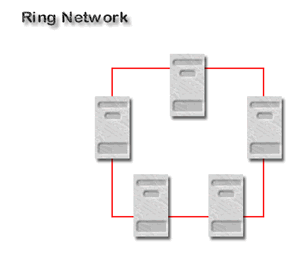July 1, 2025
Xerox PARC - continued
A new management structure
Bob Taylor's use of a flat organizational structure at PARC became the paradigm for other computer companies. Employees were able to communicate directly with their boss without passing through a layer of middle management. This structure fostered creativity and informality, reflecting, some would claim, the influence of early 1970's Californian counter-culture. However, effective use of the the model was limited to smaller companies.
PARC research and development led the way in a number of new computer technologies.
WYSIWYG (What You See Is What You Get)
Before the development of WYSIWYG, the usual approach was to apply modes e.g. input mode via a keyboard using text, or edit mode to make changes. This complicated computing tasks. WYSIWYG made working easier and it was now possible to manipulate text and graphics by using a mouse. For this to happen, GUIs had to be developed as opposed to a command line system. Furthermore, bit-mapping of images was needed. A monitor screen is divided into a grid of pixels. Each pixel can be manipulated by representing this grid with a 2-D array of binary representations e.g. a black pixel is represented by 1 and a white pixel by 0.
Ethernet
It soon was apparent that by connecting computers in networks, benefits were to be achieved from sharing resources.
Resources such as printers are rarely used all the time by one individual. It thus makes sense for several users to share one printer, instead of each user having their own printer connected to their own machine. To achieve this, the computers and the printers need to be part of a network. With a computer network, as well as sharing hardware such as printers, software can also be shared. A central computer can hold software, such as a word processing package or a reference CD-ROM, which all people connected to the network can use, thus avoiding the need to install many versions on different machines.
Communication
Within an organisation, often geographically dispersed, individuals will communicate with others via a computer. E-mail is the most widely used method of achieving this by sending text messages over a network. Some organisations have increasingly made use of video conferencing. Again, communications are enhanced by making use of networks.
File access
Mainframes and minicomputers could be used to store records. Other computers could access these records, which required them to utilise a network. Also other computers could use the larger machine to store files, either as a means of backing up their own files, or making them available for others to see.
Types of Network

Star Network (above) with a central computer at the hub and other computers acting as nodes. e.g. ATM systems.

Ring Network (above) with a chain of nodes.

Bus Network (above) has a single line which connects to each node
WAN (Wide Area Network)
A WAN is a network, which covers a large geographical area. Each node in a WAN may be located in a different town. A banking network is an example of a WAN. A mainframe or minicomputer will usually be involved somewhere in a WAN.
LAN (Local Area Network)
A LAN is a network which covers a smaller area than a WAN. Typically a LAN will serve the needs of one institution at one site. For example a university will have their own LAN, as may an individual bank. LANs often connect to other LANs and to WANs to allow communication between them. These interconnected LANs and WANs form part of a network of networks commonly known as the Internet.
Protocols
Set of rules governing network software. Controls passage of data through the network and ensures the smooth flow and understanding of that data between node computers. e.g. TCP/IP is used for the routing of packets on the Internet.
Ethernet is the network protocol for LANs and uses a bus network topology. Developed by Bob Metcalfe, this protocol achieved great success due to its reliability, speed and relative cheapness.
Ethernet uses a single high speed cable to which all nodes are joined. Only one node at a time can use the line. Each node "listens" to see if the line is clear before sending messages. Collisions are avoided, and if two messages are sent simultaneously, the system sends a message indicating a jam and message transmission is stopped.
Next page » IBM and the PC
Previous page « Cringely Ch. 5
⇑ Up to top of page